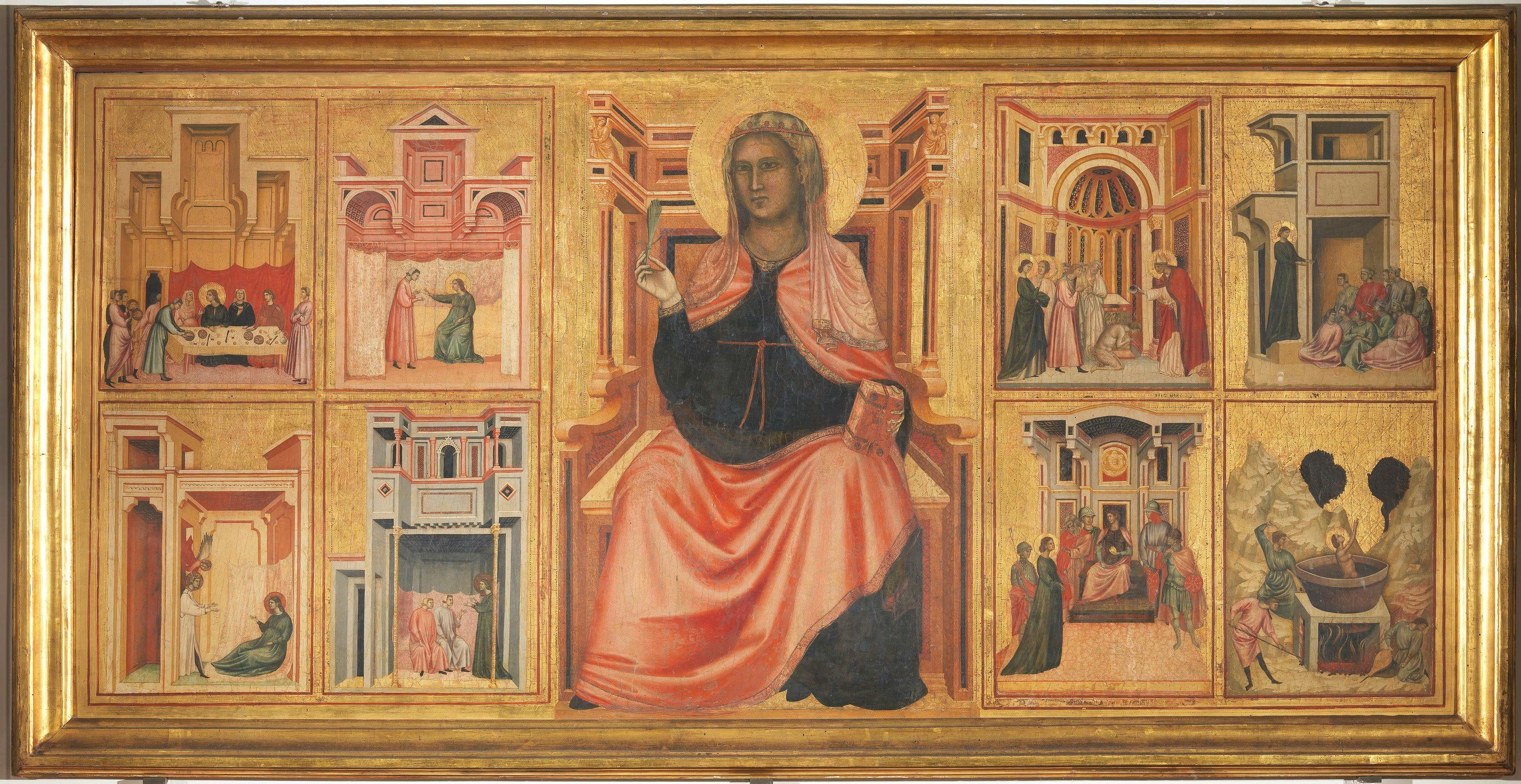Saint Cecilia and stories from her life
Master of the St. Cecilia (Gaddo Gaddi?; Florence, late 13th - early 14th century)
Cecilia, a young woman of noble origins who lived in Rome during the persecution of Christians, sits enthroned with a book and the palm of martyrdom. The major events of her legend are recounted in the eight boxes flanking the image. The narrative begins at the top left, with the banquet of Cecilia's marriage to the nobleman Valerian. In the next scene, Cecilia reveals to Valerian that she wishes to live in chastity, convincing her husband and converting him to Christianity. An angel then appears to the chaste married couple and crowns them with garlands of flowers. The last scene on the left depicts Cecilia preaching to Valerian and his brother Tiburtius.
The narrative continues in the boxes to the right, from the top. Bishop Urban of Rome baptises officer Maximus, who converted to Christianity through Valerian and Tiburtius. The two brothers, condemned to martyrdom, are depicted as saints with halos alongside Cecilia.
In the next boxes, Cecilia continues the work of evangelisation by preaching before a crowd and is brought to trial before the prefect Almachius, who orders her death in boiling water. The story ends with a scene of the saint's martyrdom, immersed in a cauldron resting on a brazier while singing praises to God. Having miraculously emerged from the boiling water unharmed, Cecilia was then sentenced to be beheaded.
The altar reredos originates from the destroyed church of Santa Cecilia in Florence and came to the Uffizi in 1844. It may have been created during the renovation of the church, which was ruined by a fire in 1304. It is the work of an associate of Giotto whose formal name, Master of Saint Cecilia, derives from this painting now in the Uffizi. Gaddo Gaddi, a painter and mosaic artist who was the forefather of a well-known family of painters, may be the hidden identity of this master. Giotto's influence is evident in the orchestration of scenes within classical, box-like architecture, within which characters with solid corporeality and vivid gestures move.
